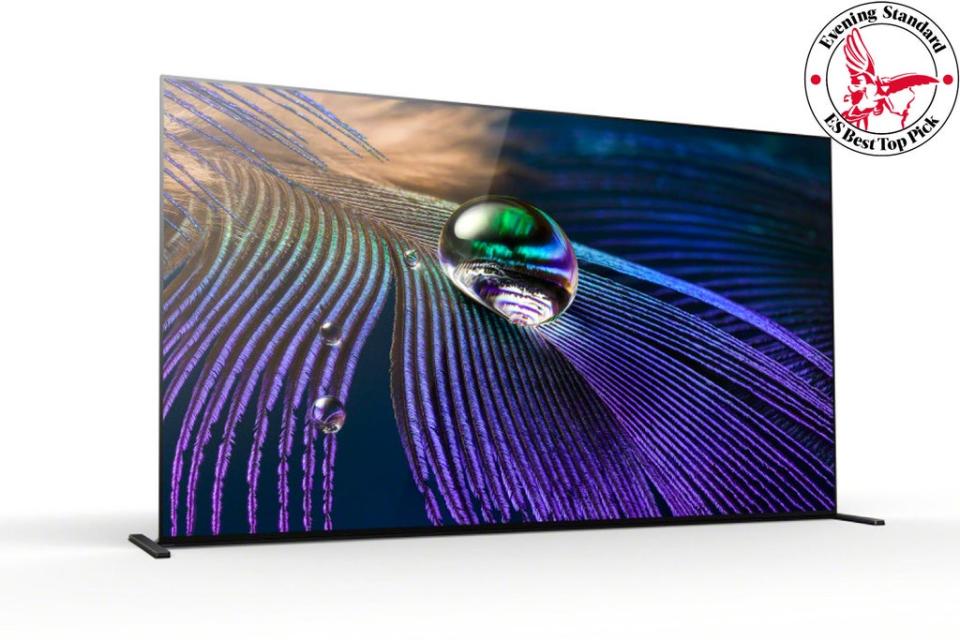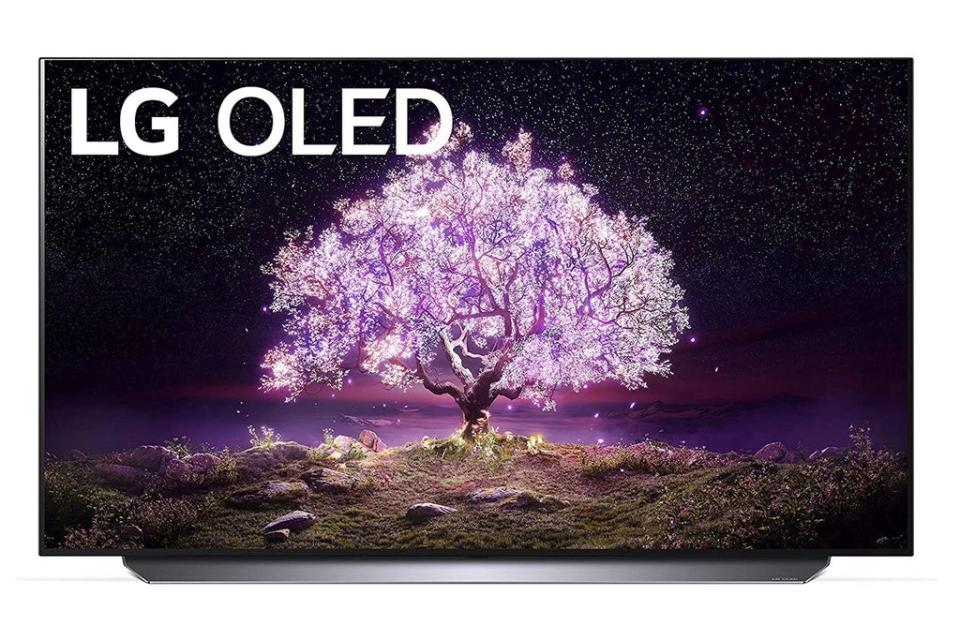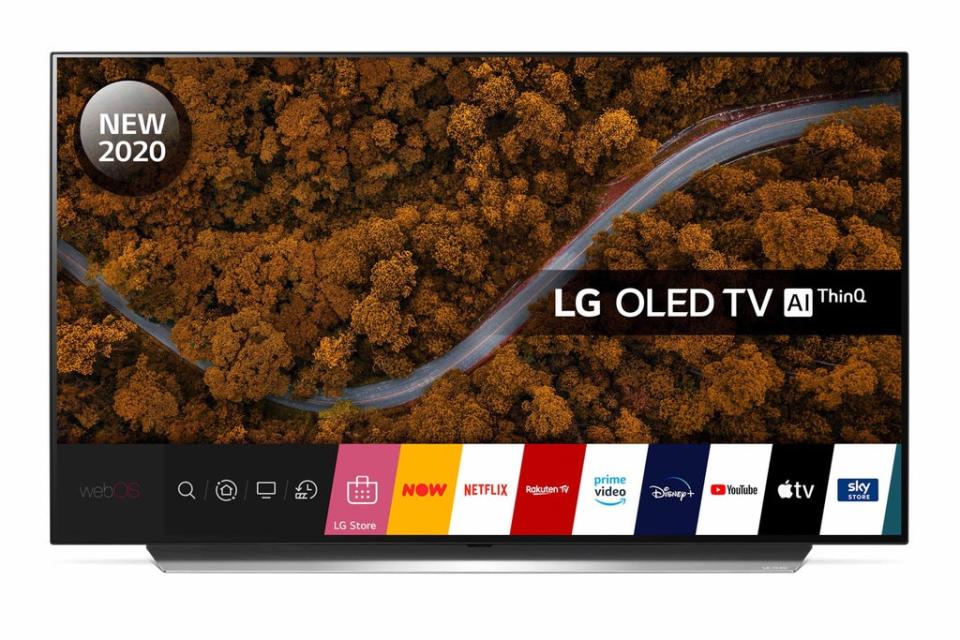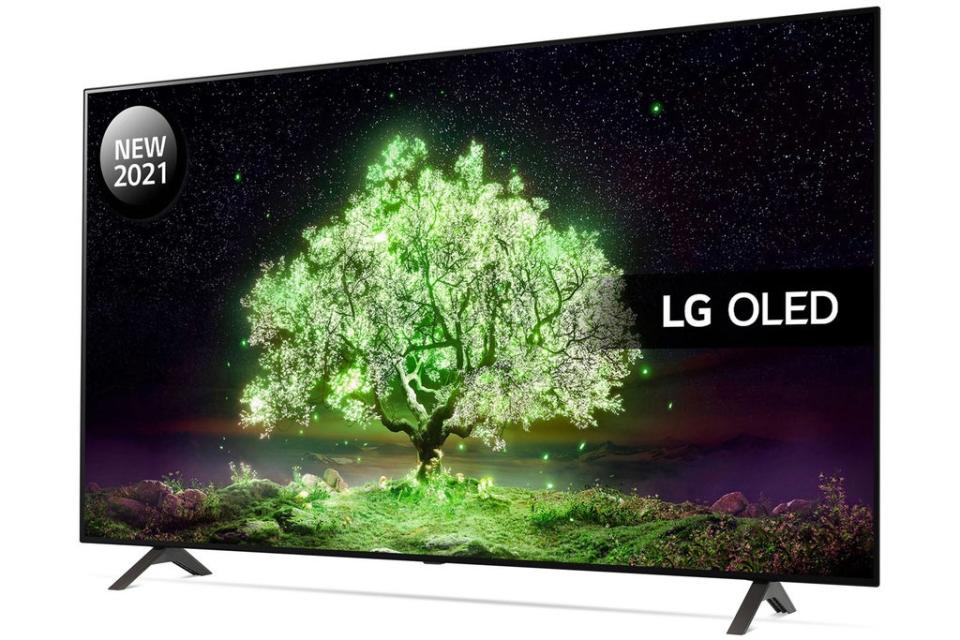Best OLED TVs 2021: Top models reviewed from LG, Samsung and more

If you’re on the search for a new TV, you’ve probably heard about OLED TVs and wondered if they live up to the hype. Well we’re here to tell you that they absolutely do.
Unlike LCD TVs, which use a backlight to light up the picture, each pixel on an OLED TV has its own light source, which can be turned on and off independently. That means when an OLED TV displays black, it is absolute black – and that impacts more things than you might realise.
It means contrast (the difference between dark and light elements in a picture) is second-to-none, and colours and highlights look brighter and more vibrant – even though LCD TVs can actually go brighter. It also makes for a sharper and more accurate picture, as there’s no “halo” effect around bright objects like you can get on LCD TVs.
OLED TVs even have the edge on design over LCDs, because with no need for a backlight they can be slimmer, making them great for wall mounting.
For a fair few years, this desirable telly tech was prohibitively expensive for all but the most splashiest of budgets, but streamlined manufacturing processes and more brands getting involved has upped the competition and brought prices down.
There are still really only four key players in the UK’s OLED market though, so you’ll see several options from the likes of LG, Panasonic, Sony and Philips in our list. Most offer their best prices at a very respectable 55-inch screen size, but you can now get smaller 48in options, as well as opting to go large at 65in as well.
Read on for our pick of the 10 best OLEDs you can buy.
Sony XR-55A90J

As Sony’s flagship OLED model for this year, you have to expect good things from the A90 – and you’d be right. This TV is nothing short of exceptional.
Available in 55in, 65in and a whopping 83in, the A90 both looks and sounds fantastic, with the Acoustic Surface Audio+ tech. It carries Sony’s most recent Bravia XR processor, which does its bit to deliver incredible detail levels to everything you’re watching, including best-in-class upscaling with non-4K content.
Of course, it reaches new heights when fed the very best content - sharp, well-defined 4K pictures and a colour palette that walks the tricky line of vibrant-yet-believable with aplomb. Its HDR performance blows the competition out of the water too, with punchy, impactful highlights against inky-deep blacks, while motion handling is unflustered by even the most fast-paced action scenes.
The A90J also packs an improved Google TV operating system for a much better user experience than previous iterations, but is currently awaiting an update to get all of the UK’s catch up services via YouView. While that will come, what’s less clear is whether VRR (variable refresh rate) will, which means serious gamers may want to look elsewhere.
While you can certainly pick up a good OLED considerably cheaper these days, if you want an outstanding one, you won’t go far wrong with this little stunner.
LG OLED55C1

LG’s C-series OLED has been the pick of its line up for a number of years now, mostly because it carried the same panel, and therefore picture performance, as the company’s more expensive models, while taking a hit on design and sound.
That’s not the case this year, thanks to the upgraded G1 (see further down this list) taking on a brighter, more advanced panel – and with it, a lot of the headlines. But there are still stacks of things to love here, making it the best choice for the majority of people.
There actually hasn’t been a huge shift in performance from its predecessor (the CX, also in this list) but that’s been the same for a couple of years, and the subtle improvements in picture and motion processing do enough to make this TV feel refreshed.
You can expect pin-sharp pictures, with stacks of detail, decent upscaling and a refined colour palette. HDR is also brilliantly handled, with support for both HDR10+ and Netflix favourite, Dolby Vision.
User experience is always top notch on LG TVs, and you won’t find a better interface or app selection than you’ll get on LG’s 2021 TVs.
The performance on the G1 is better, but it’s also considerably more expensive. When looking at things on balance, the C1 will still be the best option in LG’s line up for those weighing up price and performance, making it one of the best OLED TVs you can buy this year.
Philips 55OLED805

Philips has worked hard to become one of the main players in the OLED market , and there is no doubt that it holds its own against the likes of Sony and LG with this excellent mid-range set.
With Philips powerful P5 processor running the show, the picture processing here is fantastic, displaying crisp outlines, insightful detail and largely stable motion handling using the set’s new Pure Cinema setting. It’s not perfect, but for this level, it’s very good indeed.
Colours look great and well balanced, and contrast is superb too. You will have to play around with the picture settings to get the absolute best from it, but spend some time setting it up and it’ll reward you with every watch.
As is expected from a Philips TV, you get Ambilight around three sides of the set, which has become a real selling point for Philips TVs. There are a plethora of options as to how you want to use it to enhance your viewing experience, and we love the way it makes films and TV shows feel that little bit more immersive.
The Philips interface could do with a bit of work to make it as easy to use as the very best and the Atmos sound on board here is pretty pointless with the in-built speakers. But considering the brilliant stuff it does with your TV shows and movies, there’s no doubt that this Philips OLED TV is an absolute bargain.
Panasonic TX-55JZ2000

The JZ2000 is Panasonic’s flagship OLED for 2021, and feature’s the brand’s Master HDR OLED Professional Edition panel with its brand new AI processor.
Like its HZ2000 predecessor, the JZ2000 has a Dolby Atmos sound system on board, with a front-facing Technics branded speaker under the screen, rear mounted height channels for the Atmos effect and new side speakers for added width too. The result is a whopping 125w of sound that should scratch any itch you might have for a separate a soundbar.
From a picture perspective, the AI processing from the new HCX AI processor brings this Panasonic set bang up to date with its rivals. Its Auto AI mode should do a good job at tweaking its sound and picture settings to suit whatever you’re watching, meaning you don’t have to worry about digging around in the menus too much.
Of course, if picture poking is your thing, Panasonic’s pro-level picture settings offer fantastic opportunity to tailor the picture exactly to your tastes.
Panasonic offers support for both Dolby Vision IQ and HDR10+ Adaptive, advanced HDR formats which can adjust the image based on ambient lighting conditions via the use of a sensor. This should ensure HDR images look vibrant but never overcooked.
On-demand and catch-up apps are handled by Freeview Play, with the majority of the big names present and correct, while support for 4K 120FPS gaming is go thanks to the set’s HDMI 2.1 inputs.
It’s not cheap, but Panasonic’s best OLEDs have the calibre to demand it. They aren’t a favourite of home cinema aficionados for nothing.
LG OLED48CX

We mentioned LG’s outstanding C-series range earlier, and the CX is the company’s offering for 2020. But while it might be considered “last gen” on paper, there’s nothing last gen about its performance.
It was the first 48-inch 4K OLED TV on the market, giving you real flexibility on size if you need it. And unlike this year’s range, its panel matched the one on the more expensive screens, making it a real bargain.
Featuring LG’s a9 Gen 3 processor, it promised enhancing picture processing on the 2019 sets, which improved things such as shadow detail and colour handling, and increased peak brightness in HDR scenes too. There’s no HDR10+ support here though, but Dolby Vision is more widely supported anyway.
Elsewhere it’s the same sharp, detailed picture we’d expect from LG, alongside a fantastic user interface, good connectivity and – thanks to a long overdue firmware update earlier this year – now has all the catch up apps and services you could want.
If you want all the loveliness of OLED in a smaller screen size, the OLED48CX is an outstanding buy – even a year on from its release.
Sony KD-48A9

Hot on the heels of LG’s 48in OLED, Sony’s KD48A9 gives those looking for a smaller screen options – and a pretty tempting one at that.
Powered by Sony’s once-flagship X1 Ultimate processor and part of its high-end Master Series range, the A9 has plenty of power under the hood to deliver stunning picture quality, with incredible levels of sharpness and detail across the board. Whether you’re watching 4K Blu-ray or your bog standard TV channels, this telly will bring the best out of them, including HDR content, which is as bright and punchy as you could want it to be.
Colours are vibrant too – perhaps a little warmer than real life but not distractingly so. They just add to the liveliness of the picture, which combined with top-notch insight and believable depth creates a vivid, realistic picture that is hard to beat at this level.
Sony’s best-in-class motion processing is present and correct here too, keeping things steady and blur-free. The A9 even sounds decent, with Sony’s screen-vibrating Acoustic Surface tech giving a confident and direct sound that doesn’t immediately scream “buy a soundbar” at you.
Gamers may find themselves disappointed with a lack of VRR and higher frame rates that the most recent consoles can make the most of, but for everyone else, this is probably the best 48in OLED you can buy.
LG OLED65G1

The G1 is a first for LG’s OLEDs, in that it features an upgraded panel compared with the rest of the range, promising a much improved picture performance.
This improved panel works alongside the new, more powerful Alpha 9 Gen 4 processor to create a ‘brighter, sharper, punchier image’, according to LG – and the proof is there in the watching.
Considering LG’s OLEDs have never really felt lacking, it’s quite something that the G1 has been able to improve on the picture performance of last year’s OLEDs across the board. Brightness is absolutely improved, detail retrieval is outstanding and there’s improved subtlety to its handling of colour and shading, but with plenty of vibrancy too.
Outlines are crisp and defined, and that remains the case even when dropping down to lower quality content – showing the upscaler on board is a good one. You’ll get all the UK catch up apps via Freeview Play, as well as next-gen HDMI features across all inputs that should keep gamers happy.
Sound is a bit of a letdown considering how well this set does everywhere else, but you’d probably want to invest in a soundbar at the very least anyway. The only real snagging point is the design – it’s made to be wall mounted and you don’t get any feet or stand in the box if that doesn’t work in your room. As long as that’s something you can live with, as well as the £500 price difference from the 65in C1, there’s no doubt that this is the best OLED to come out from LG’s labs yet.
Sony KD-55A8

Sony’s A8 is the company’s mid-range OLED from last year, and sits just below the 48in A9 that’s also made our list. It brings with it many of the same strengths that we love in other Sony OLEDs, offering a superb all-round performance that delivers on picture, features and sound – and all at a really good price.
Sony’s commitment to excellent picture quality is once again clear on the A8. Colours are natural and subtle – they’re a little more understated than some of its rivals but can still pack a punch when needed.
Motion processing remains second-to-none and detail retrieval is outstanding – particularly in dark scenes. Sony keeps things crisp and doesn’t let a single thing pass it by, and give or take a bit of expected noise as the quality drops, this remains the case across the board, from 4K through to TV broadcasts.
HDR content (with support for HDR10 or Dolby Vision) looks gorgeous too, and is as bright and punchy as you’d expect, without ever being OTT.
Sound is also pretty impressive. Using an iteration of Sony’s Acoustic Surface, the A8 has speakers that are built into the screen, which helps sound to feel much more integrated with the picture. It’s crisp and focused, and has no problem filling a room.
As a mid-range TV, there are some compromises to be hand, and so it’s perhaps not surprising that the HDMIs lack the most recent specs for gamers to make the most out of. However, if you like the look of Sony’s 2021 TVs but your budget won’t stretch to them, the 55in A8 is definitely worth a look.
Philips 65OLED935

Sitting at the top of Philips’ OLED offering, the OLED935 delivers flagship-worthy picture quality alongside much improved sound quality, with a Dolby Atmos soundbar by Bowers and Wilkins stylishly built into the stand. Philips passed the sound processing of its very best tellies over to the hi-fi gurus a couple of years ago, and it’s proved itself an admirable partnership indeed.
With ten separate drivers behind its grille, including a couple of upwards firing speakers, the soundbar can deliver that sense of height that Atmos soundtracks thrive on. It absolutely delivers when it comes to clarity, detail and separation, though we have heard standalone Atmos soundbars that push sound quality further.
Picture-wise, the 935 improves upon the 805 with better detail retrieval, improved contrast and brighter, punchier HDR pictures. You won’t have to choose between advanced HDR formats either, with support for Dolby Vision and HDR10+ on board for whatever content is thrown its way.
As with the 805, playing around with the settings does help you to get the most out of this picture, but there’s no getting away from the gorgeous texture and depth the 935 brings to pictures, along with pretty good motion handling too.
Once again, the Android TV user interface could be slicker, and we’re missing out on some of the next-gen HDMI features for gaming, but you do get all the catch-up and on-demand apps you could want, including Netflix, BBC iPlayer and Disney+.
LG OLED55A1

This year’s entry-level OLED for LG comes with some compromises compared to everyone’s favourite C-series. But it’s one of the most affordable way to get your hands on an OLED, and for that reason alone, it’s worth a look.
The big difference here is the lower processing to the rest of the range. That means that although it’ll be capable of OLED’s famed inky blacks, vibrant colours and outstanding contrast, there are some ‘buts’ to take on board.
Based on our experience with 2020’s BX, you can expect that pictures won’t be quite as clean and crisp as the C1 can manage, particularly in darker scenes where you’ll likely spot picture artefacts, like grain and banding, and less shadow detail. Motion is likely to be less smooth, upscaling not quite as clever and HDR content may not manage the same impact either.
However, take a step back from analysing the picture too closely and you’ll find a hugely watchable and enjoyable picture that still delivers a lot of what makes OLED brilliant. Gamers will miss HDMI 2.1 functionality, but at this price, that’s not too much of a surprise.
Come with your eyes open for the compromises and you’ll still find plenty to enjoy.
Verdict
For those with the big bucks to spend, the Sony XR-55A90J delivers the very best of what OLED has to offer, delivering a class-leading picture and sound that packs a punch. However, for those with more modest budget, the LG OLED55C1 offers a superb performance at a more palatable price.

 Yahoo News
Yahoo News 
